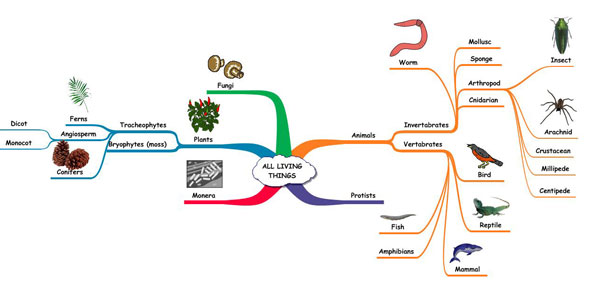Living Things Respond To Their Environment!

Read each question carefully and choose the best answer. You must score a 80% or better in order to print out your certificate of completion to hand in! In this quiz, pick the most appropriate response to each stimuli.
- 1.
The temperature of a room rises...
- A.
Sweating
- B.
Shivering
- C.
Heartbeat Rises
- D.
Digestion Rate Increases
Correct Answer
A. SweatingExplanation
When the temperature of a room rises, the body's natural response is to cool down. Sweating is the process by which the body releases heat through the evaporation of sweat from the skin's surface. As the sweat evaporates, it takes away heat from the body, thus helping to regulate body temperature and prevent overheating. Therefore, sweating is a physiological response to an increase in room temperature.Rate this question:
-
- 2.
The flower needs sunlight for photosynthesis...
- A.
The flower turns away from the sun
- B.
The flower follows the sun across the sky
- C.
The flower wilts
- D.
The flower changes color
Correct Answer
B. The flower follows the sun across the skyExplanation
Plants undergo a process called phototropism, where they orient themselves towards a light source to maximize their exposure to sunlight. This is because sunlight is crucial for photosynthesis, the process by which plants convert light energy into chemical energy to fuel their growth. By following the sun across the sky, the flower ensures that it receives an optimal amount of sunlight throughout the day, allowing it to produce enough energy for its metabolic processes and maintain its overall health and vitality.Rate this question:
-
- 3.
Snow falls in the arctic...
- A.
The snow hare changes colors to help with camoflauge
- B.
The porcupine has spikes
- C.
The posion arrow frog has bright colors
- D.
A dog sheds its coat
Correct Answer
A. The snow hare changes colors to help with camoflaugeExplanation
The snow hare changes colors to help with camouflage. This is a common adaptation in many animals that live in snowy environments. By changing its fur color to white, the snow hare can blend in with its surroundings and remain hidden from predators. This camouflage helps the snow hare to survive and increases its chances of finding food and avoiding becoming prey.Rate this question:
-
- 4.
Sunlight shines brighter...
- A.
Pupils of your eyes get larger
- B.
Pupils of your eyes get smaller
- C.
Eyes change color
- D.
Tears are produced
Correct Answer
B. Pupils of your eyes get smallerExplanation
When sunlight shines brighter, the pupils of your eyes get smaller. This is because the iris, which controls the size of the pupil, contracts in response to increased light intensity. The contraction of the pupil helps to regulate the amount of light entering the eye, preventing excessive brightness from damaging the sensitive structures within the eye.Rate this question:
-
- 5.
Skin is exposed to large amounts of UV rays...
- A.
Melanin is increased in skin for protection (tanning)
- B.
Sweating
- C.
Shivering
- D.
Hair on skin stands on end
Correct Answer
A. Melanin is increased in skin for protection (tanning)Explanation
When the skin is exposed to large amounts of UV rays, the body increases the production of melanin. Melanin is a pigment that gives color to the skin, hair, and eyes. The increase in melanin is a protective response to the UV rays, as it helps to absorb and disperse the harmful radiation. This increase in melanin is commonly known as tanning, and it acts as a natural defense mechanism to protect the skin from further damage caused by the UV rays.Rate this question:
-
Quiz Review Timeline +
Our quizzes are rigorously reviewed, monitored and continuously updated by our expert board to maintain accuracy, relevance, and timeliness.
-
Current Version
-
Mar 21, 2023Quiz Edited by
ProProfs Editorial Team -
Dec 11, 2009Quiz Created by
Smitka313
- Anatomy Quizzes
- Bacteria Quizzes
- Bio Quizzes
- Biological Evolution Quizzes
- Biology Exam Quizzes
- Biology Test Quizzes
- Cell Quizzes
- Cell Biology Quizzes
- Chapters Of Biology Quizzes
- Classical Conditioning Quizzes
- Conservation Biology Quizzes
- Enzyme Quizzes
- Fungi Quizzes
- General Biology Quizzes
- Genetics Quizzes
- Immunology Quizzes
- Macromolecule Quizzes
- Marine Biology Quizzes
- Microbiology Quizzes
- Mitosis And Meiosis Quizzes
- Parasitology Quizzes
- Prokaryote Quizzes
- Protist And Fungi Quizzes
- Protozoa Quizzes
- Respiratory Quizzes
- Spine Quizzes
- Stem Cell Quizzes
- Taxonomy Quizzes
- Traits Quizzes
- Ultimate Biology Quizzes
- Virus Quizzes
 Back to top
Back to top


